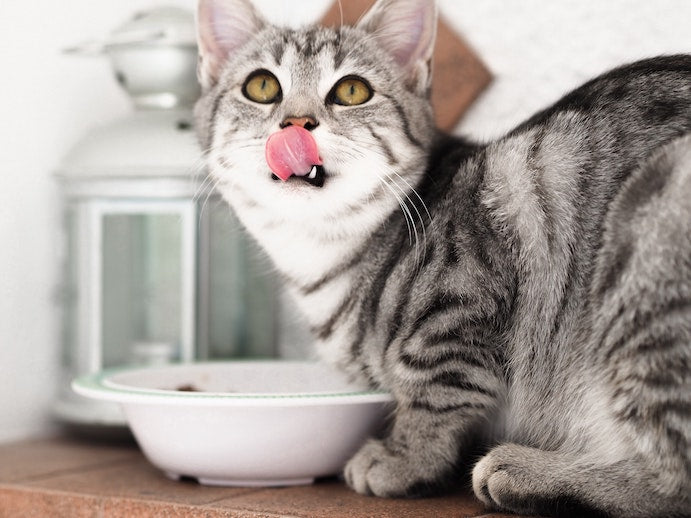One thing I'm sure we can all agree on is that we want our cats to have the very best, including when it comes to cat food. As with us humans, health in cats usually starts from within and that is why we also want to give them high-quality food. We've already talked about important nutrients in our cat food series. In today's article, we want to talk a little more about the qualitative differences in cat food.
What is "high quality" cat food?
Price, origin, organic or not - how exactly can you tell that it is high-quality cat food? You probably know the overwhelming feeling of standing in the feed department and not really knowing what to do next. Of course, high-quality food is not always in the same price range as other types of food, but if you want to be on the safe side, it is worth taking a look at the composition of the food.
What does my cat need?
If you read the last blog about cat food ingredients, you know that cats depend on certain ingredients. Cats are natural carnivores, i.e. meat eaters, and therefore also absorb all the nutrients they need from meat. Sure, you can't go out every morning and hunt down some small animals for your cat, but you can monitor how much meat is actually in your cat food.
A look at the composition of cat food will tell you that it usually contains less meat and more meat products. But what exactly is the difference and how does it affect the quality of cat food?
meat and meat products
According to EU guidelines, at least 4% of the animal named on the packaging (eg chicken or pig) should be included. But these 4% do not have to be raw meat either, but can also consist of other meat products. Raw meat refers to the actual meat of the processed animal, while meat products are made up of offal and other animal by-products. Meat products often consist of animal tissue, which is very poor in nutrients, but also of by-products such as liver, which in turn have a higher nutrient content.
In general, the more actual meat the feed contains, the higher its quality.
nutrient
If you read a bit further on the composition, you will also find a small table showing the raw nutrients contained in the feed.
Crude proteins, raw ash and raw fiber are found directly in the meat and in higher concentrations and also come directly from animal products such as meat and bones.
Additives such as magnesium, vitamins and sometimes even sugar are not contained in the processed meat and do not exactly speak for the quality of the feed. Good, high-quality meat already contains all the nutrients your cat needs. Too many additives are unnecessary and in some cases can also be harmful (e.g. sugar and sweeteners).
In general, the fewer additives, the higher the quality of your cat food.
In summary, there are a few points to keep in mind when purchasing:
The more meat, the better the quality.
The more raw materials, the higher the quality.
The more additives, the lower the quality.
Depending on the price range, the composition of the cat food varies. There are better and worse cat foods even under cheaper brands.

We hope this article has given you a better understanding of the composition of cat food. We're not vets or nutritionists ourselves, so if you have more questions about your cat's specific nutritional needs or want to make drastic dietary changes, it's best to check with your vet. If you want to learn even more about cat food, read through more blogs in this series and subscribe to our newsletter to never miss a new blog!



